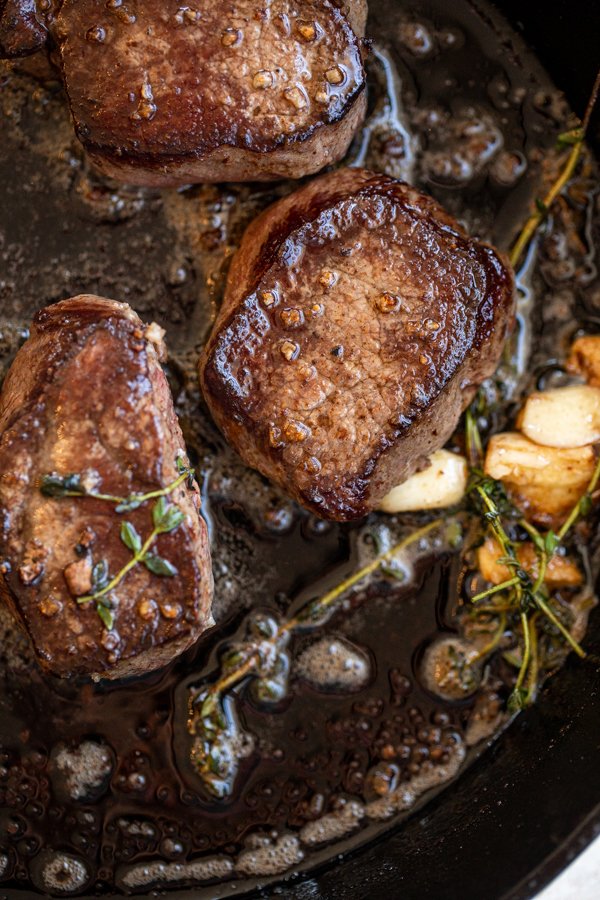
Table of Contents
You hear people talking about soaking venison in buttermilk. But why? Does it work? I tried it and here’s what happened.
For YEARS people have been telling me to soak venison in milk or buttermilk before cooking it. Any time I put a post out on social media about why deer meat might taste *gamey* someone always comments “soak in milk overnight. Works every time.” Honestly, I never really got the hype.
Prefer watching a video over reading an article? Here’s the full experiment I did on YouTube!
After all this time, I decided to do a controlled study. I took venison chops from the same animal and cooked them the exact same way: salted, seared in a cast iron pan, basted in garlic, thyme and butter, rested for 10 minutes, finished with flakey salt, pepper, and a squeeze of lemon. My variable was soaking 3 of the chops in buttermilk overnight prior to cooking.
Here’s what happened:
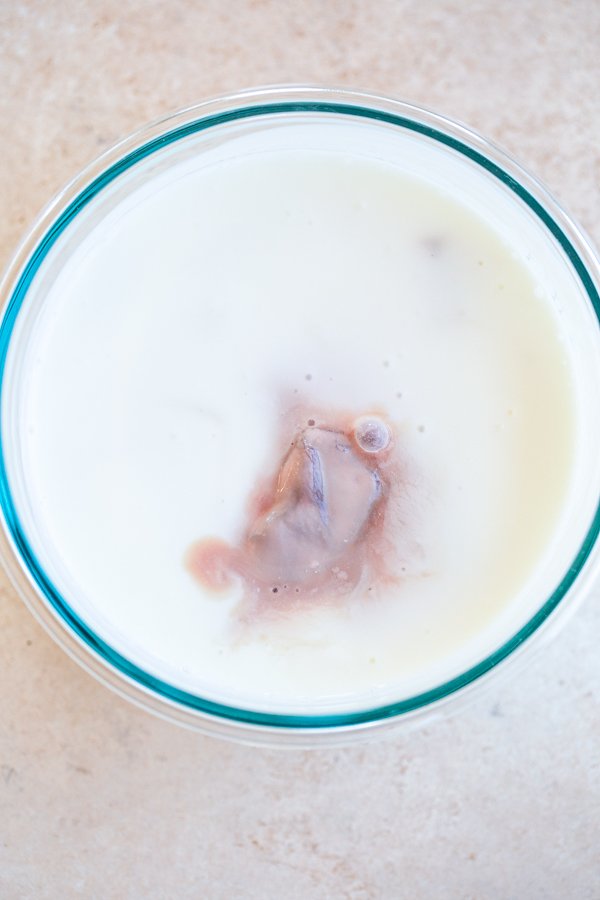
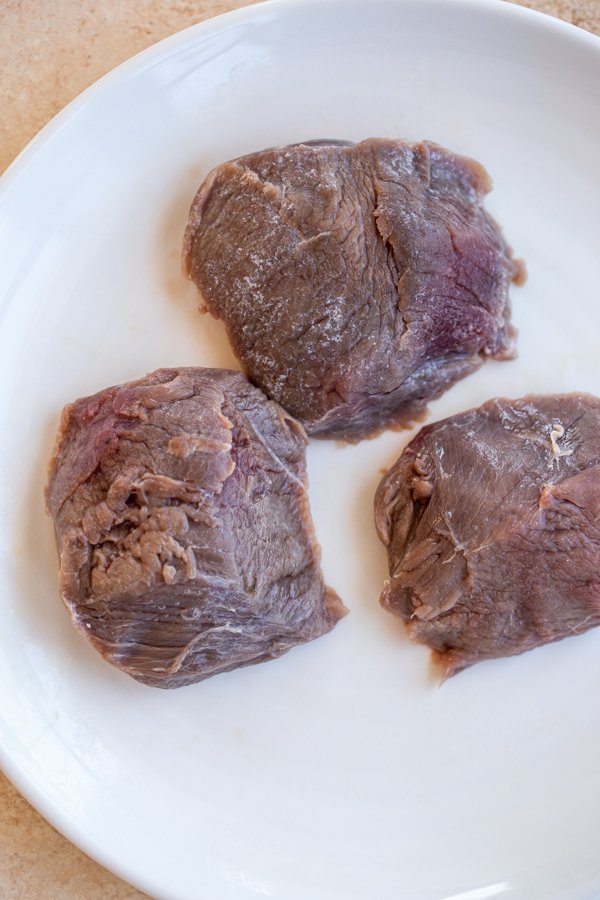
Why soak venison in buttermilk? What does it do?
People have been soaking venison and other proteins in milk or buttermilk for years. The claim is that the acidic or low ph level helps to break down the tissue to tenderize the meat while also ridding the meat of a powerfully “gamey” or wild/iron-like flavor.
I ultimately choose to work with buttermilk because it has a lower ph level than milk.
Why I was skeptical
I was mainly skeptical because of the marriage of flavor between venison and milk/buttermilk. It’s just not an inherently great pairing. My initial thought was “yes, I’m sure the acid in buttermilk can help tenderize the meat but wouldn’t you be better off using a marinade with flavors that complement venison? Like citrus or red wine.”. I’m in love with my All-Purpose Marinade (and still am after this experiment) so my thoughts were to stick with something like that instead of using a dairy product.
The thought of getting all of the buttermilk off of the meat before cooking also seemed daunting. One of my biggest tips for working with any protein is drying your meat with a paper towel as best you can before cooking to get a great sear. So, this worried me, too. But, forth I went to the kitchen.
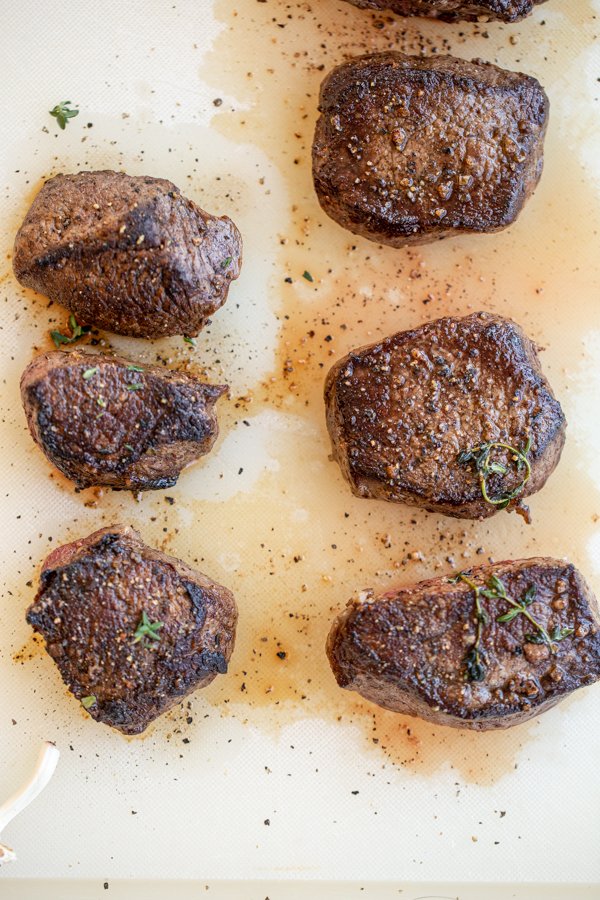
How to soak venison in buttermilk
To soak venison in buttermilk all you need to do is grab a zip-top bag or bowl with a lid and totally submerge the meat in the buttermilk. I marinated overnight, but 4 hours or so should do the trick.
Next, once the meat is marinated, remove it from the buttermilk and PAT IT DRY. You’re going to use up a few paper towels (or kitchen towels if you’re OK with that). BUT DO NOT RINSE THE MEAT. Just be very diligent and pat the meat dry with a towel. It will be fine and actually didn’t hinder the searing process or leave a weird taste behind at all. (are you starting to get the sense that this worked well for me?!)
Next, heat a cast iron pan or grill over medium-high heat. I prefer the cast iron method so I’ll talk about that here.
While your pan heats, salt the meat generously and pat it dry AGAIN with a towel. When the pan is hot, add some sort of high heat tolerant cooking fat (duck fat, avocado oil, etc) and add the meat to the pan.
Cooking time will vary depending on the size of your chops. But, when you have a nice sear on one side (anywhere from 2-5 minutes) flip the meat. Then, add about 1-2 tablespoons of butter, smashed garlic cloves and fresh thyme to the pan. Tilt the pan to the side and baste the meat by spooning the butter and aromatics over the chops.
Once the internal temperature reaches about 115-125F, remove the meat from the pan. If you’re grilling just flip and grill on each side for 2-5 mins. You do NOT want to cook venison over medium-rare. I like rare plus. Trust me and get used to cooking it this way.
Let it rest for at least 10 minutes before slicing against the grain.
Season with some fresh cracked pepper, flakey salt (or regular salt – just a pinch) and a little squeeze of lemon. You’re done! That’s all there is to it.
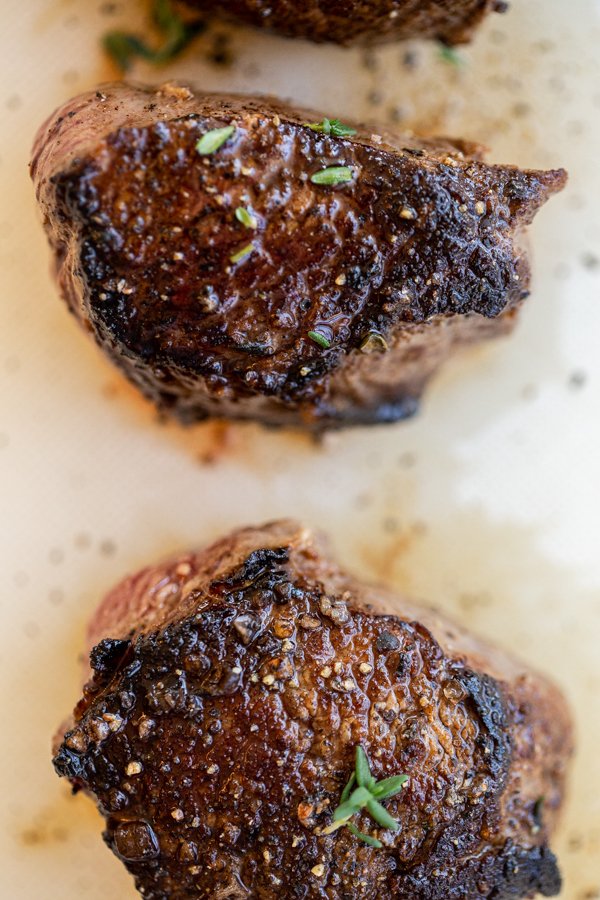
Here’s how soaking deer meat in buttermilk works
The ph level in buttermilk helps to break down the tissue to tenderize the meat and aid in moisture retention resulting in potentially more tender and juicy meat. The protein found in dairy, casein, also binds to the meat potentially helping to rid the animal of a powerfully “gamey” or wild/iron-like flavor.
Does soaking venison in buttermilk work?
In short – YES! Here’s what I noticed after comparing plain venison and buttermilk soaked venison cooked in the same fashion:
- The meat was more tender and retained more liquid making it plumper and juicer. The buttermilk soaked meat actually looked different than the control on the inside. It was visibly juicer (check out the video to see).
- The flavor of the buttermilk marinated meat was more mild. I actually prefer the control group (plain, unmarianted) because the taste was fresher and a bit more *wild*, if you will. However, the animial I was working with was extremely palatable and perfectly cooked (if I do say so myself).
- The meat did not taste poor due to being soaked in dairy! I managed to get off all of the buttermilk just by patting dry and there was not a residual flavor left behind.
So…Should you soak deer meat in milk or buttermilk?
Here’s my conclusion. Soaking in buttermilk can help if one of the following circumstances is true for you:
- You don’t like the taste of deer meat because you’re not used to eating it and you have a bunch of chops and steaks to use up and you like beef steak.
- You harvested an older buck or buck in peak rut and the flavor is strong. Or really if you have an animal that just tastes really negatively different to you (maybe it’s diet, lifestyle) from past deer you’ve consumed.
- Something went awry with your kill and you potentially didn’t execute swiftly enough.
- You’re cooking for a group of people who are intimidated by the flavor of deer meat.
- Something went amis during the field dressing or processing process (and the meat is still safe to eat).
- You just want to switch things up because you’ve got SO MUCH deer meat on hand.

All in all, I’m pleasantly surprised by the results of this study. Will I always soak my meat in buttermilk? Nah. Will I do it again? Probably! I was impressed by the tender texture it resulted in most of all.
Thanks for humoring me and encouraging me to write this post! What should I test next? In the meantime, grab a copy of my cookbook, Venison Every Day, for more recipe ideas!
Other recipes you may find helpful:
- Ground Venison Tacos
- Venison Lasagna
- Venison Chili
- Venison Burgers
- Venison Enchiladas
- Venison Pasta Bake








































